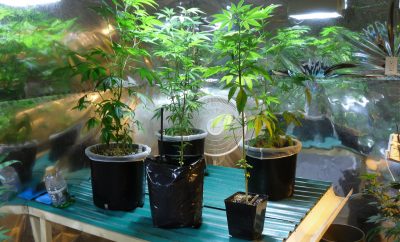 Image Courtesy of tanjila ahmed; License: (CC BY 2.0)
Image Courtesy of tanjila ahmed; License: (CC BY 2.0)
Cannabis in America
Colorado’s Legal Marijuana Market Created 18,000 Jobs in 2015
A new study details some of the positive effects Colorado’s legal marijuana industry has had on its economy: in 2015, it created 18,000 new full-time jobs, and there was $2.4 billion in total economic activity. Commissioned by the state, the Marijuana Policy Group’s study is the first scientific, data-based study on Colorado’s cannabis economy. Previous dives into Colorado’s legal pot industry have relied on surveys and anecdotal reports.
The authors write that the study’s purpose is to “help voters, policymakers, and regulators understand how marijuana legalization impacts the state economy in terms of output, tax revenues, GDP, and employment.”
What the new study finds is a thriving market that has led to direct and indirect benefits for the economy. Large-scale growth is expected through 2020, at which point “the regulated market in Colorado will become saturated.”
Chief among the legal pot market’s impact is the $2.4 billion dollars it infused into the economy in 2015. Nearly $1 billion of that activity, the study found, can be attributed to simple retail sales. The rest is from secondary revenue generators, or spillover effects: “warehousing, cash-management, security, testing, legal services, and climate engineering for indoor cultivations.,” the study found.
Legal pot has also raked in a bundle of new tax revenue: $121 million in 2015, the second-highest tax revenue source in the state, nearly twice as much as marijuana tax revenue in 2014. The report found “marijuana tax revenues are growing more quickly than any other tax type in the state,” and that the increase “reflects a combination of demand growth and a demand shift from the untaxed black and gray markets into the taxed retail market.”
Most of the economic growth is due to customers shifting from Colorado’s black market to its legal, regulated market. And though a black marijuana market still exists in Colorado, the study found that by 2020, 90 percent of marijuana sales will come from the regulated market. The other ten percent is expected come from home growers and underground sales.
Finally, the study concludes that “legal marijuana demand is projected to grow by 11.3 percent per year through 2020,” at which point the market will saturate, and begin to mirror other retail industries that follow population trends.








Comments